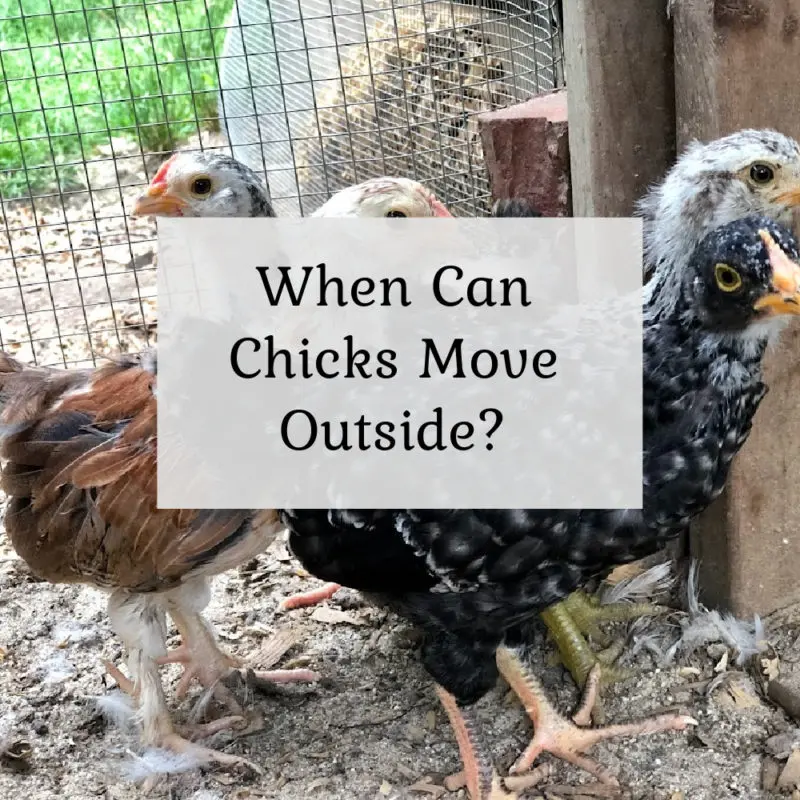Have you ever stood next to your brooder and asked yourself whether they’re ready for outdoors yet? This moment comes in every chicken owner’s life. Your little chickens are growing up quickly, flapping their small wings and peeping louder as the day goes by. The brooder starts feeling small, and the idea of letting them experience sunshine and fresh air starts becoming tempting. But when it’s about your young flock, timing and conditions matter.
In the chick owner’s mind, the all-time question is, “When can chicks go outside safely? This entirely depends on more than just age, where feather growth, temperature, and wind play a role. Here’s what to look for before you give your chicks their first taste of the great outdoors.
Watch the Thermometer: Temperature Makes a Big Difference
Young chicks aren’t able to regulate their body temperature until they’re feathered completely; this happens around six to eight weeks old. Till then, they rely entirely on external warmth, such as a heat lamp in a brooder. Whenever you think about moving them outside, you need to initially check the temperature.
The outdoor temperature that’s perfect for young chicks is at least 70°F (21°C) during the daytime. If they haven’t grown all their adult feathers yet, anything below that can be risky. A slight chill in the air can be enough, even if the sun is shining, in order to make your chicks uncomfortable or even ill.
The great sign is the weather being consistently warm for a few days. Don’t make outdoor visits when the temperature suddenly drops. Keep an eye on local forecasts before you plan any outdoor adventure.
Feather Check: Are they covered and comfortable?
As much as weather is crucial, feather development is, too. Baby chicks are born covered in soft down, but it doesn’t do much to keep them warm. Full feathering provides better insulation, which means they’ve grown their juvenile feathers. They can handle outdoor temperatures more confidently once they’re fully feathered by six to eight weeks.
It’s the right time to ask again: When can chicks go outside? If their feathers are patchy or they look fluffy, they’ll need more time indoors, even if the weather seems great. If your chicks look sleek and feathered and show active behavior, they’re almost ready for the outdoors.
Say No to Wind, Rain and Wet Grass
Wind and moisture will be harmful to young chicks even on warmer days. But to a chicken weighing just a few ounces, a strong breeze may not feel like much to you. Cold can make them huddle in stress and chill their bodies.
Mud, morning dew, or wet grass may be dangerous. Chickens don’t have waterproof feathers like ducks. The moisture can lower their body temperature quickly if their feet or bellies get wet. Avoid placing them outside after rain or early in the morning when the ground is damp. Sunny afternoons and dry weather make the best conditions for a first outing.
Create a Chick-Friendly Outdoor Setup
Don’t just place chicks anywhere in the yard when your chicks are ready. Make sure to choose a shaded, safe, and contained area. It needs to be free from predators such as cats, dogs, and hawks that fly above. The ground needs to be free of tall grass and dry or rough stones that may hurt their feet.
Give both shade and sun in the area. Chicks even need to cool off if it gets too hot, even though they enjoy the warmth of the sun. Give them fresh water and keep outdoor sessions short initially. Don’t send them out for more than 30 minutes. Later, you may increase the time as they get comfortable, and you need to adjust it at their own pace.
Observe Closely and Transition Slowly
It’s vital to ease chicks into the change even after meeting all the right conditions. You need to supervise the initial outdoor visits and keep them short, too. Look for discomfort signs such as huddling together, standing in one spot, or loud chirping. These behaviors mean they’re scared, overwhelmed, or cold.
It’s a good sign if the chicks scratch around, explore, and peck at the ground. Then, every day, you can increase their outdoor time, but you need to bring them back to their warm brooder between visits.
Make sure that you remember to prepare their outdoor coop. It needs to be dry, clean, and predator-proof with proper ventilation. If the weather cools down unexpectedly in the first few days, you may add a heat plate or a safe heating pad.
Final Thoughts
Moving chicks outdoors is about paying attention to their comfort, growth and even your local weather and not just about watching the calendar. Full feathering, warm temperatures, and dry days are keys to a successful transition. Every chicken grows at its own pace, so patience is vital.








